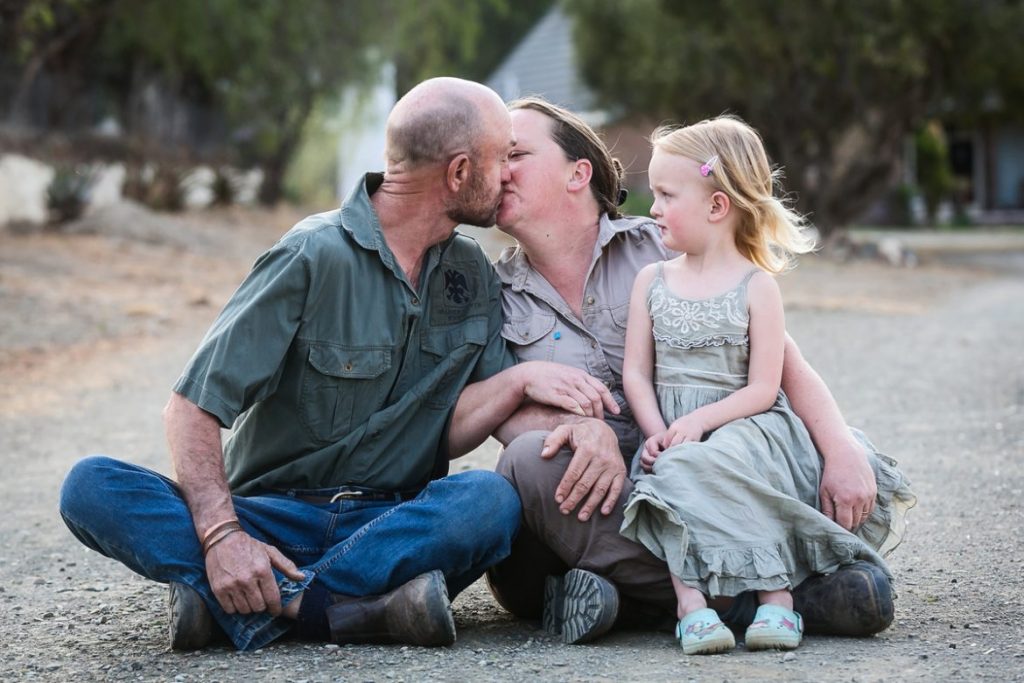I’ve been too reliant on convenience. My groceries are delivered to my door, and so are many of my essentials. Often, if I need something, I’ll look no further than the internet. With food and job security hanging in the balance in South Africa, there’s a part of me that does want a simpler life – even if I must kick the comfort of convenience for good.
I picture growing my food and fostering a connection with the land around me. I roast peppers straight from the garden, and I collect eggs straight from the coop bubbling with clucks. If I need something, I’ll find it in the veggie patch, or in the pantry stocked with homegrown grains. Living self-sustainably is a vision I share with many other South Africans who dream of having a secure future.
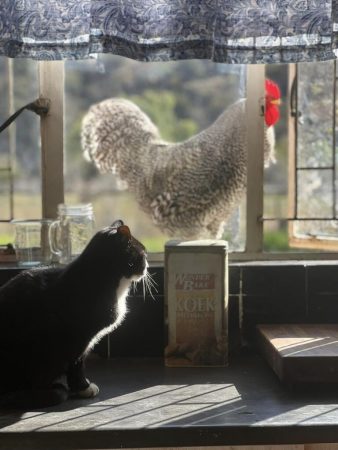
Tracey Michau
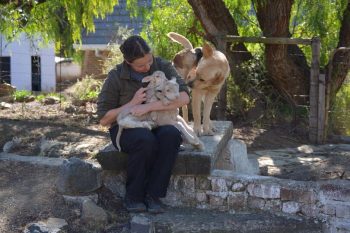
Tracey Michau
Run us through a day on the homestead?
No two days are the same and that is what I love about living a self sustainable life. Many of my mornings start with my herd of Indigenous Veld goats, new kids are tagged and documented. Then, the Jersey cows are milked and I get to cheese making. The process involves stirring and resting curds, so other chores like processing veggies from the garden are done in between. The afternoons are spent with our daughter, who often lends me a helping hand. It’s a slow, simple and often very stressful lifestyle that offers many rewards.
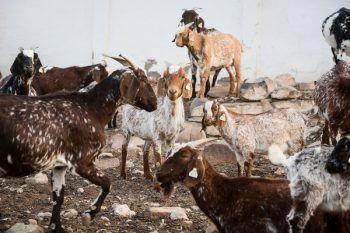
Tracey Michau
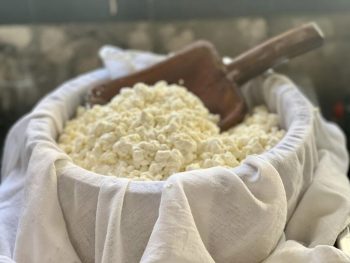
Tracey Michau
A valuable lesson that living self-sustainably has taught you?
The most valuable lesson I have learned is that in order to be truly at peace and happy, we need to continuously cultivate and strive towards the lifestyle we want. If you want to live self sustainably, start by learning. What you don’t know, you can pick up through experience, through reading, and through connecting with others who are living the lifestyle you want.
Cheesemaking?
I’m a hobby cheesemaker, my style leans towards old methods that make use of wooden cheese moulds. The correct maintenance of wooden equipment promotes the selection of a microbial flora which play an active role in fighting off pathogenic bacteria, wood is fantastic. My go-to cheeses are usually what we enjoy eating at the time. We love a wheel of Gouda, Camembert, Brie, or Cambozola. I often incorporate natural cultures such as Filmjölk, Kefir and Skyr, too.
Cheese isn’t a homestead-only affair, you can learn how to make your own simply by signing up for a course through Finest Kind.
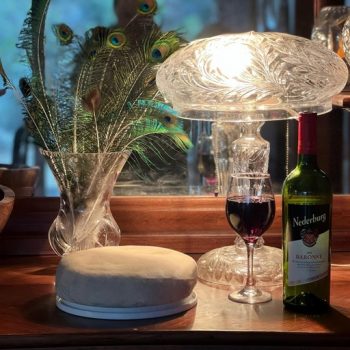
Tracey Michau
What else is in the pantry?
My pantry is stocked with homemade nutrient-rich, gut-loving foods like L. Reuteri yoghurt, kefir, sourdough, kombucha. I have also started to cultivate Spirulina to produce my own superfood. There’s no greater reward than enjoying a nutritious meal that comes straight from the garden. Even if you don’t have the space outside, there are alternatives. Research space-saving methods of growing food such as vertical gardening, or start with a small herb garden on the windowsill.
What about a cheeky farm-to-table recipe to leave us inspired?
Sure! I recently harvested nettle and it makes a really tasty pesto and is delicious paired with Camembert cheese and sourdough bread or freshly made pasta. I also like to add a little fresh basil. Nettle is incredibly easy to grow, so anyone can do it!
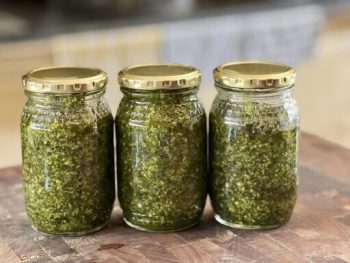
Tracey Michau
Nettle Pesto Recipe
- 200g Nuts (walnuts, macadamia or cashew)
- 150g Parmigiano-Reggiano cheese or any good hard cheese
- 150g Blanched nettle (leaves only with stems removed)
- 340g Olive oil
- 15g Dried lemon powder or 50ml lemon juice
- 3 garlic cloves
- Salt and black pepper to taste
Prepping your nettle:
- Wearing latex or rubber gloves, remove leaves from stems (use stems for tea). Wash leaves and drain.
- In a large saucepan, over medium-high heat, add the leaves. Stir with a wooden spoon and cook until all leaves have wilted and turned dark green, about 2 minutes. Remove cooked nettle.
- Drain nettle leaves and squeeze to remove as much water as possible. Set aside.
Making the pesto:
- In a blender or food processor, coarsely chop walnuts, garlic and Parmesan cheese.
- Add cooked nettles, lemon juice, salt and pepper. Process until well blended.
- With processor running, pour in oil to make a paste.
- Taste and adjust seasoning as desired.
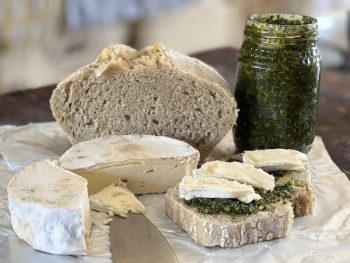
Tracey Michau
Enjoy on pasta, pizza, sandwiches or mixed into sauces or dips. Store in the refrigerator for up to 3 weeks in a well-sealed jar. Or freeze in convenient portion size – consider freezing in ice cube trays for small, easy-to-use portion sizes. Store in the freezer for up to 6 months.
ALSO SEE: How to create a sustainable green kitchen
A version of this article was originally published and shared by Woman&home.
Feature image:

